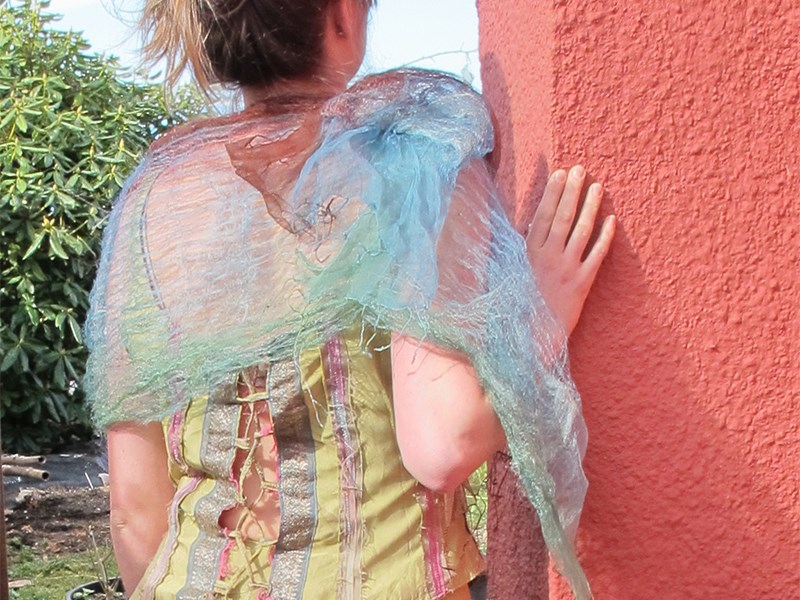Slow clothing may not have made it to the racks of North American department stores, but it is making an impact. On the runway of the third annual eCouture Wearable Art Fashion Show in Powell River, the latest in-vogue creations will be on display from environmentally conscious designers.
According to show organizers Shaunalee Yates and Wendy Drummond, eCouture is ethically manufactured clothing made, mended or modified to last.
“It’s an ecologically sound way to make clothes,” said Yates.
Slow clothing is a growing response to fast fashion, similar to how gastronomy offers an alternative to fast food. Proponents of slow clothing consider fast options bad for the planet, and for people wearing them.
“What we want people to start thinking about is, ‘Where are my clothes coming from? What’s the narrative around my clothes? Is it someone chained to a sewing machine in a third-world country?’” said Yates.
Hosted by Malaspina Art Society on Saturday, April 22, at Dwight Hall, the fashion event will showcase designer imagination and talent, and create awareness of the human and environmental cost of the fast-fashion industry.
“When we started with the idea of developing the fashion show, it was around Earth Month,” said Drummond. “It brings awareness to sustainable local alternatives to fast fashion.”
Focus is placed on providing an option to fashion consumerism, which takes the latest designs from catwalks at Paris or New York fashion weeks and mass produces them for retail stores. The result is disposable clothing, as opposed to what eCouture is: the design, creation and buying of clothes for quality and longevity.
Drummond said people are starting to think differently about their clothing, including buying better and finding ways to make it last.
“We’re using natural materials, so we’re avoiding the chemically produced, processed acrylics and polyesters,” said Drummond. “We use hand-dyed printed fabrics that are local, focusing on local fibres.”
Last year, 17 designers participated in the event. This year that number is nearly double, with 31 attending, some from Vancouver Island and the lower Sunshine Coast, including a designer who works in the rather obscure and specialized area of dyeing with mushrooms, said Yates.
Drummond said every piece on the runway is going to be something funky and fun that people are going to love. The show features five categories, including nature materials, metal turned into jewellery and bags and clothing that have been repurposed from thrift shop finds. Another popular category, Artgraveus, includes up-cycled, recycled, repurposed and reusable fashion garments made from trash.
“It’s where we have fun with the Let’s Talk Trash team,” said Drummond. “We had a coffee-cup dress last year. This is a fun one where people get to see we can do. They take discardable trash and turn it into a wearable fashion, even if you may only wear it once.”
Yates said eCouture is taking off and its influence on the multibillion-dollar fashion industry can be seen on the street with unfinished, exposed seams, tears in jeans and patching, which is all trending now.



